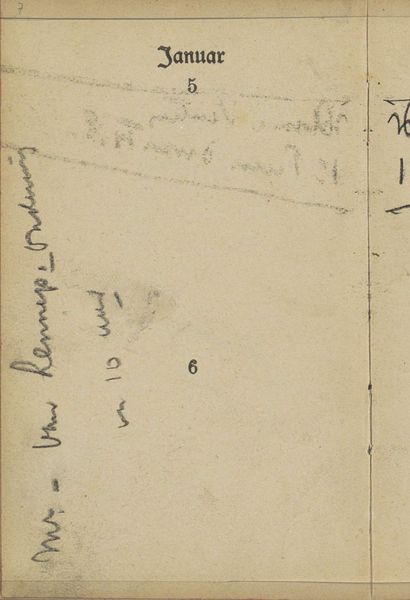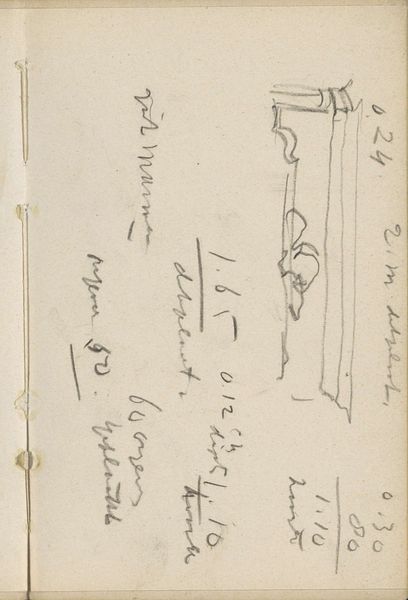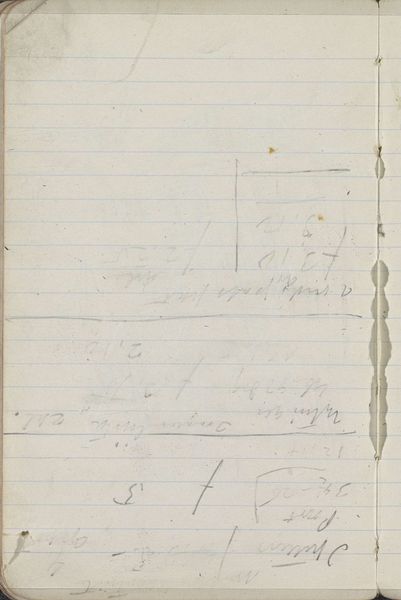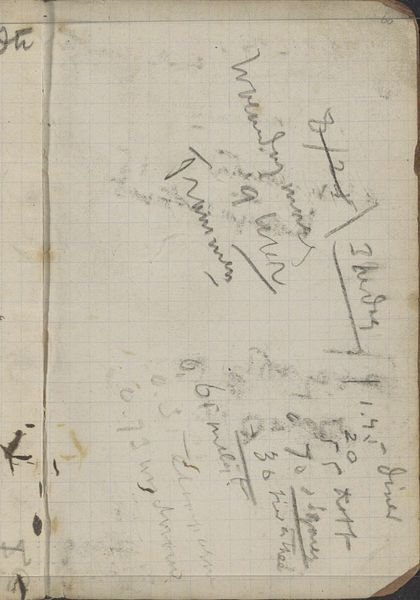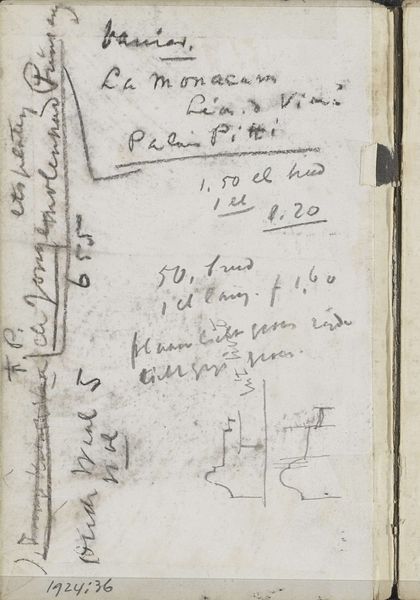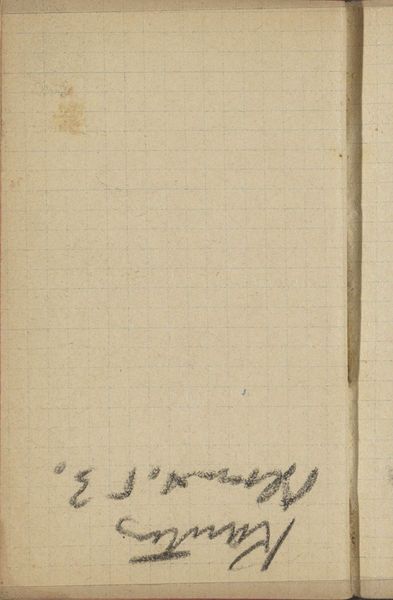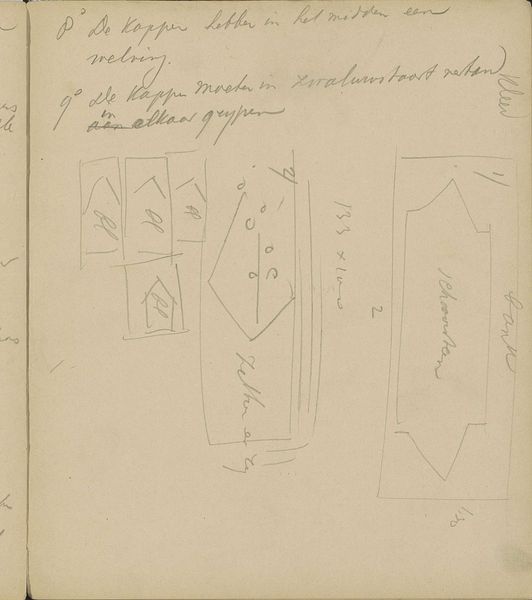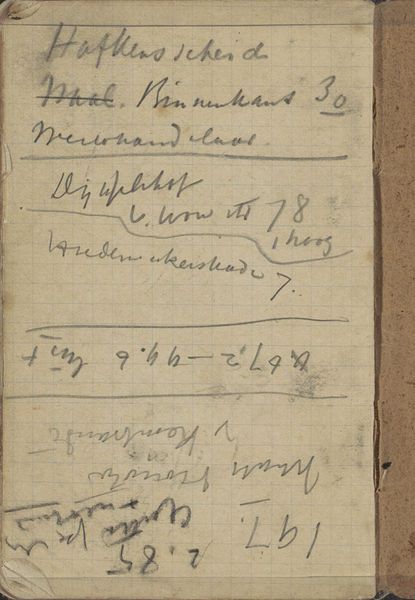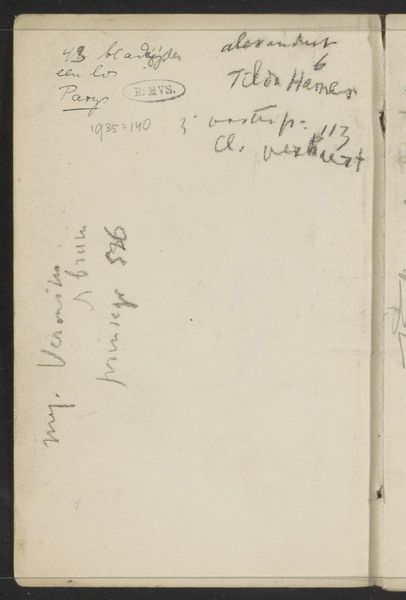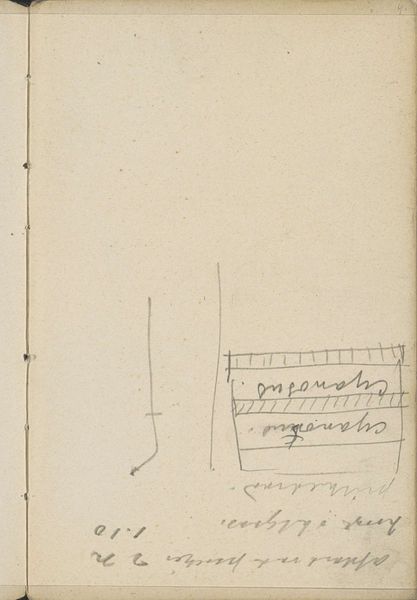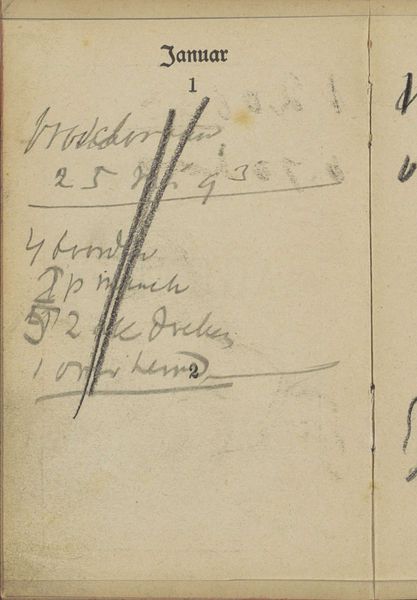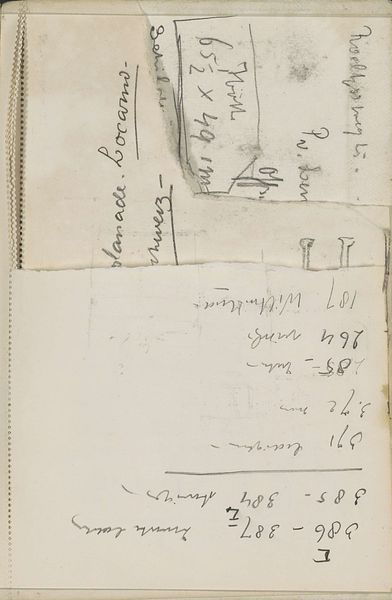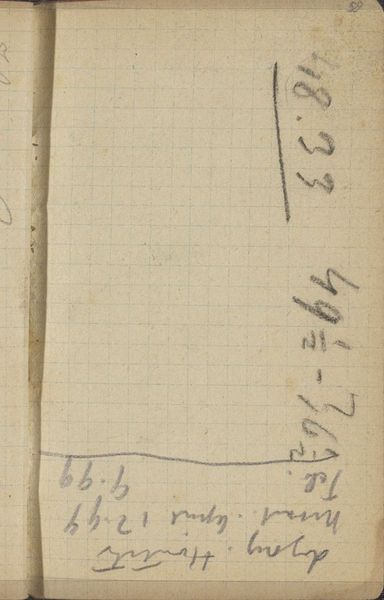
drawing, pencil, architecture
#
drawing
#
aged paper
#
toned paper
#
impressionism
#
sketch book
#
hand drawn type
#
personal sketchbook
#
hand-drawn typeface
#
fading type
#
pencil
#
ink colored
#
sketchbook drawing
#
cityscape
#
sketchbook art
#
architecture
#
building
Dimensions: height 105 mm, width 136 mm
Copyright: Rijks Museum: Open Domain
Editor: Here we have "Studie, mogelijk van een topgevel," which translates to "Study, possibly of a gable," created around 1890 by George Hendrik Breitner. It’s a drawing made with pencil, ink on toned paper, and it's currently held in the Rijksmuseum. It feels so fleeting, like a quick thought captured. I’m wondering, what is it about this unassuming sketchbook page that intrigues you? Curator: Well, beyond its unassuming appearance, it’s fascinating to consider how a sketch like this participates in the larger narrative of urban development and artistic practice at the time. Breitner was known for documenting Amsterdam, often focusing on everyday life, and this quick sketch offers insight into his process. He's capturing a detail, likely of the built environment, but it raises questions about whose city is being built and for whom. Does the sketch include a price? "De roos... f 750?" Editor: I see it now! What's striking is the immediacy of it; Breitner’s not creating a finished product, but rather recording a momentary impression. But I also see it is labeled with a price and architectural notes. Does it connect to a commission perhaps? Curator: Precisely! And that shifts our understanding of the drawing. This sketch becomes a document of potential real estate, tied to economic and social forces. The sketch therefore acted not just as a preparatory study but possibly as part of a transaction. Do you consider this art? Editor: That's a really interesting point. Yes, I suppose I do, but its purpose extends far beyond pure aesthetics. Maybe that makes it more interesting? It reveals the artist's role as both observer and participant in shaping the city. Curator: Exactly! The sketch's apparent simplicity masks complex layers of social, economic, and artistic context, demonstrating the inherent public role of art as historical and social documentation. Editor: I've never considered a sketch like this could be a piece of the historical record, especially concerning urban development. That opens my eyes! Curator: Indeed, seeing art as embedded within broader cultural and institutional frameworks really changes our perception of what constitutes art and its function in society.
Comments
No comments
Be the first to comment and join the conversation on the ultimate creative platform.
